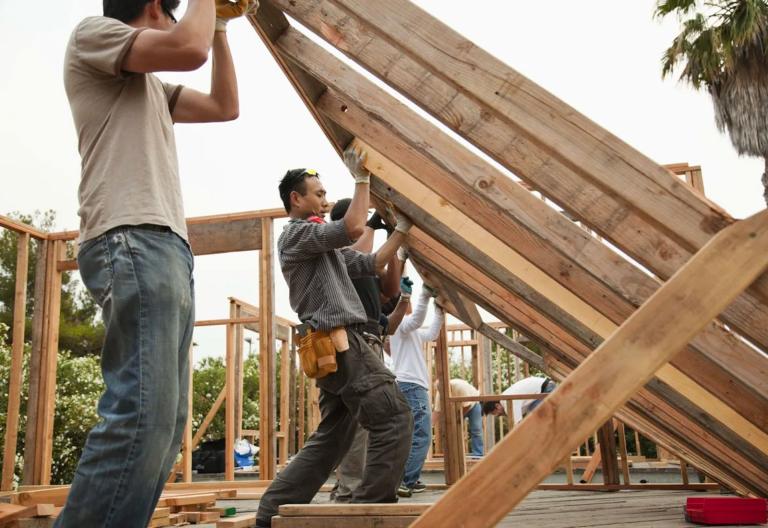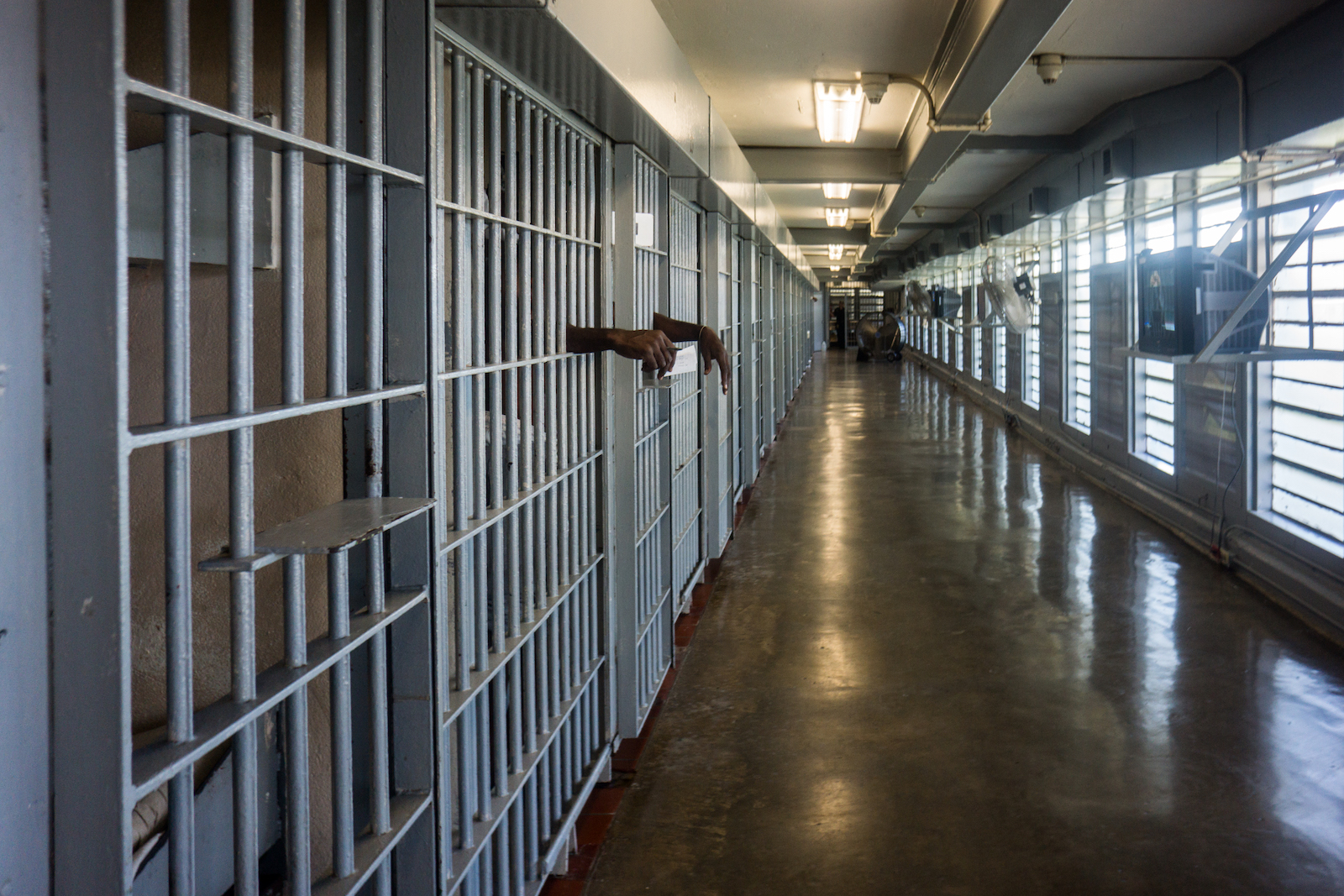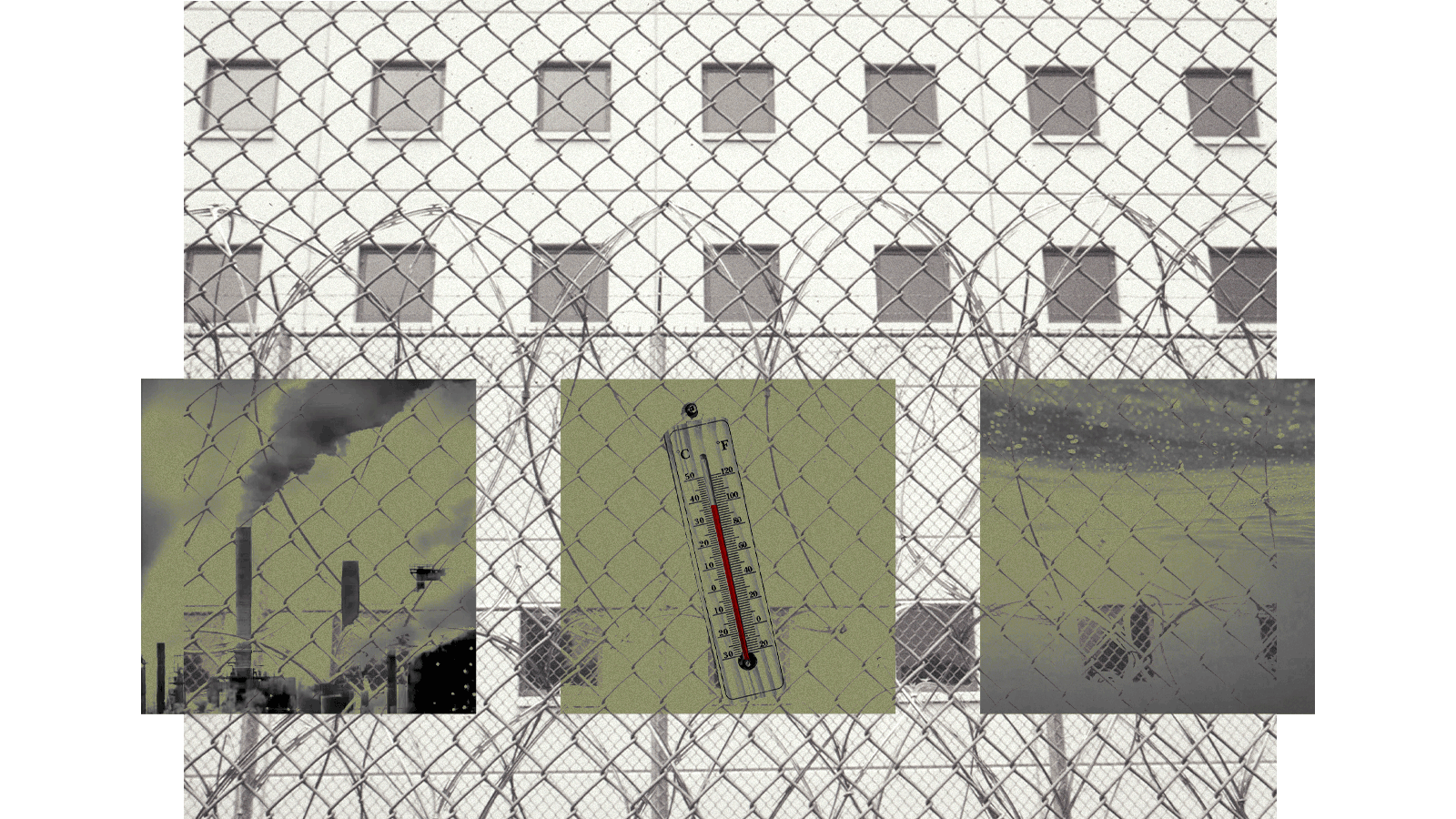Sadadra Davis spends hundreds of dollars every month to talk to her fiancé, Johnion Davis, on the phone. They’re inseparable, she says, even though he has spent the last few months incarcerated at Nelson Coleman Correctional Center in St. Charles Parish, Louisiana, and each call runs about $5. But then Hurricane Ida made landfall on August 29.
That afternoon on the phone with him, Davis said she heard what sounded like “the wind taking the roof off” the top of the jail. St. Charles Parish was flooding, and winds touching 100 miles an hour ripped through the neighborhoods bordering the Mississippi River. Although the parish was under a mandatory evacuation order, Johnion and more than 300 other inmates were left at the facility.
“I was like, ‘You know y’all are under mandatory evacuation,” Davis recalled saying. “He responded basically with, ‘These people aren’t worried about us.’”
Within minutes of Ida reaching St. Charles, the jail lost power and running water. Davis, who lives more than two hours away in Lafayette, was worried about her fiance but couldn’t get any information from the sheriff’s office in charge of the facility. Friends and family members, too, were left in the dark.
Ida, a fast-moving storm that turned into a hurricane in three days after forming, tested local governments’ emergency response plans. Some areas, like New Orleans, told residents to shelter in place, whereas towns in neighboring parishes were under evacuation orders. But Davis isn’t alone in thinking that officials neglected incarcerated people: More than a dozen civil rights groups have raised questions about why some detention facilities in Hurricane Ida’s path weren’t evacuated before the storm.
Louisiana is known for getting battered by hurricanes. It also puts more of its citizens behind bars than any other state in the U.S., with 1,094 of every 100,000 residents behind bars. If the state were a country, it would have the highest incarceration rate in the world. (1.6 times higher than the actual leader, the United States.) Unlike those on the outside, people inside of prisons depend entirely on jail officials and local governments to keep them safe during a natural disaster. But there is no coordinated or mandated system to manage prisons during these kinds of events.

According to the U.S. Department of Justice, Louisiana also has the highest in-custody mortality rate. The coronavirus pandemic has made this much worse: At one point last year, 42 percent of the state’s inmates had tested positive for COVID-19. The health risks are heightened by the prevalence of pre-trial detainment, in which people, like Johnion, are sometimes incarcerated for months without ever being convicted of a crime.
The lack of a coordinated plan for jails leaves more than 50,000 incarcerated people in Louisiana facing elevated threats from natural disasters, with patchwork efforts for ensuring prison conditions are livable after the initial danger subsides. These risks have long been known: In 2005, following Hurricane Katrina, a reported 7,000 prisoners went days without electricity, trapped in cells filled chest-high with sewage water.
“When we think about people who are incarcerated, I would argue that they are on the front lines of climate change,” said Andrea Armstrong, a law professor at Loyola University New Orleans. “There are deliberate structural reasons behind this: Detention facilities are where government authority is at its highest and individual power is at its lowest.”
Currently, Armstrong says, there are no statewide guidelines for protecting incarcerated people during disasters in Louisiana’s more than 130 detention centers. It leaves those in charge of the facilities — county governments, sheriffs, and the state’s Department of Public Safety and Corrections — to come up with their own emergency response plans.
As a result, activists say, disasters tend to linger longer inside of prisons than outside of them.
“The most loss of life doesn’t occur during the storm itself but in the days following, when people have no access to drinking water, electricity, and sometimes food,” said Mei Azzad, a member of the national environmental justice organization Fight Toxic Prisons.
In the week after Ida hit southern Louisiana, the Nelson Coleman Correctional Center’s phone system was shut down for days, and Davis said the sheriffs didn’t respond to any of the emails she sent from four different accounts. Unable to find answers online, Davis made the trek from Lafayette to the jail, 30 miles outside New Orleans. She had recently found out that their 4-month-old child was prone to seizures and wanted to hear Johnion tell her that everything would be OK. But when she made it to the jail, she said she was turned away immediately and given no information.
Officials from St. Charles Parish, who have jurisdiction over the jail, did not respond to Grist’s requests for comment, but St. Charles Parish Sheriff Greg Champagne publicly said inmates weren’t evacuated because the $28 million facility constructed in 2001 was built to withstand a Category 5 hurricane. Yet Davis, advocates, and others in touch with those incarcerated at the facility have told Grist they heard the building has had flooding and rolling power outages.
In Lafourche Parish, where Ida made landfall, a mandatory evacuation order was issued, but no evacuation was implemented for the roughly 600 people locked in the Lafourche Parish Detention Center. On August 30, the day after the storm first hit, the jail, which sustained damage and lost power, made news for posting video footage of inmates — some of whom were reportedly detained pre-trial — filling up sandbags to protect property across the parish against flooding. In Baton Rouge, young people detained at a city-run juvenile detention center were not evacuated from the facility, and the center lost power for a day and a half, according to the advocacy law group Promise of Justice Initiative in New Orleans.
It wasn’t much better for facilities that did evacuate. Inmates in Orleans Parish and Plaquemines Parish were moved north of Baton Rouge to the Louisiana State Penitentiary, known as Angola. But an outdated inmate search system prevented their family members from knowing about it. Once inmates were moved back to their respective county jails, local sheriffs opted to impose mandatory quarantines rather than letting people go through routine COVID tests, according to the Promise of Justice Initiative. This meant they couldn’t have visitors or go outside for at least another two weeks. Young people lucky enough to be evacuated, like those from the Youth Study Center, a detention center in New Orleans, were moved to adult facilities, an action that Louisiana public defenders have argued is illegal.
Azzad and other activists argue that the entire system needs an overhaul. A better framework, they say, could take on two problems at once: climate change and mass incarceration. Revamping sentencing laws they consider outdated and racist would reduce the state’s prison population, save money, and make evacuations easier. For those incarcerated ahead of their trials, advocates have suggested allowing them to evacuate or shelter with their families, since they have yet to be convicted of a crime.
“What we need is holistic investments in our communities to keep us safe,” Azzad said. “Investing in job programs, accessible food systems, housing, and education would allow us to have fewer people in prison, but also access to more people for climate-resilient response systems.”
Armstrong thinks inmates need a voice in the conversation, too. Giving them agency could mitigate the psychological fallout from disasters, like post-traumatic stress, depression, and anxiety. Studies show an increase in disciplinary actions against prisoners following emergencies. After Hurricane Harvey in 2017, for instance, Houston inmates were punished for attempting to stockpile bottled water in anticipation of the storm. Incarcerated people in the region were reported to have been drinking from dirty toilets in the aftermath.
“When incarcerated people are left out, they have to make adaptations on their own to survive,” Armstrong said, “and then they are typically disciplined for that.
For three weeks after the storm, Nelson Coleman Correctional Center lacked clean water — and inmates had just one opportunity to contact their loved ones, which only happened after intense protest by family members and community groups.
Davis finally heard from Johnion nearly two weeks after Ida hit. It was an odd call, she said, because her normally talkative fiance stayed on the phone less than three minutes before saying he had to go. She suspects that correctional officers were monitoring inmates’ calls to make sure they weren’t talking about how the jail handled the storm.
“They’re leaving us in the dark on purpose,” Davis said. “I know they want to just look at them like, ‘Oh, they’re just criminals,’ but they’re somebody’s family — these people have family that love them.”





